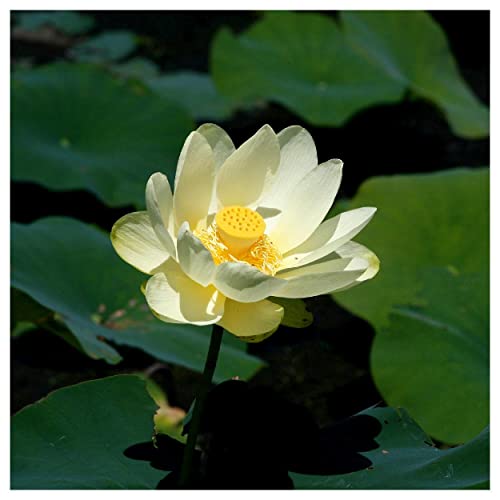Transform your pond with plate-sized golden blooms – expert advice on how to grow American lotus
This native aquatic plant would make a stunning focal point in any water garden

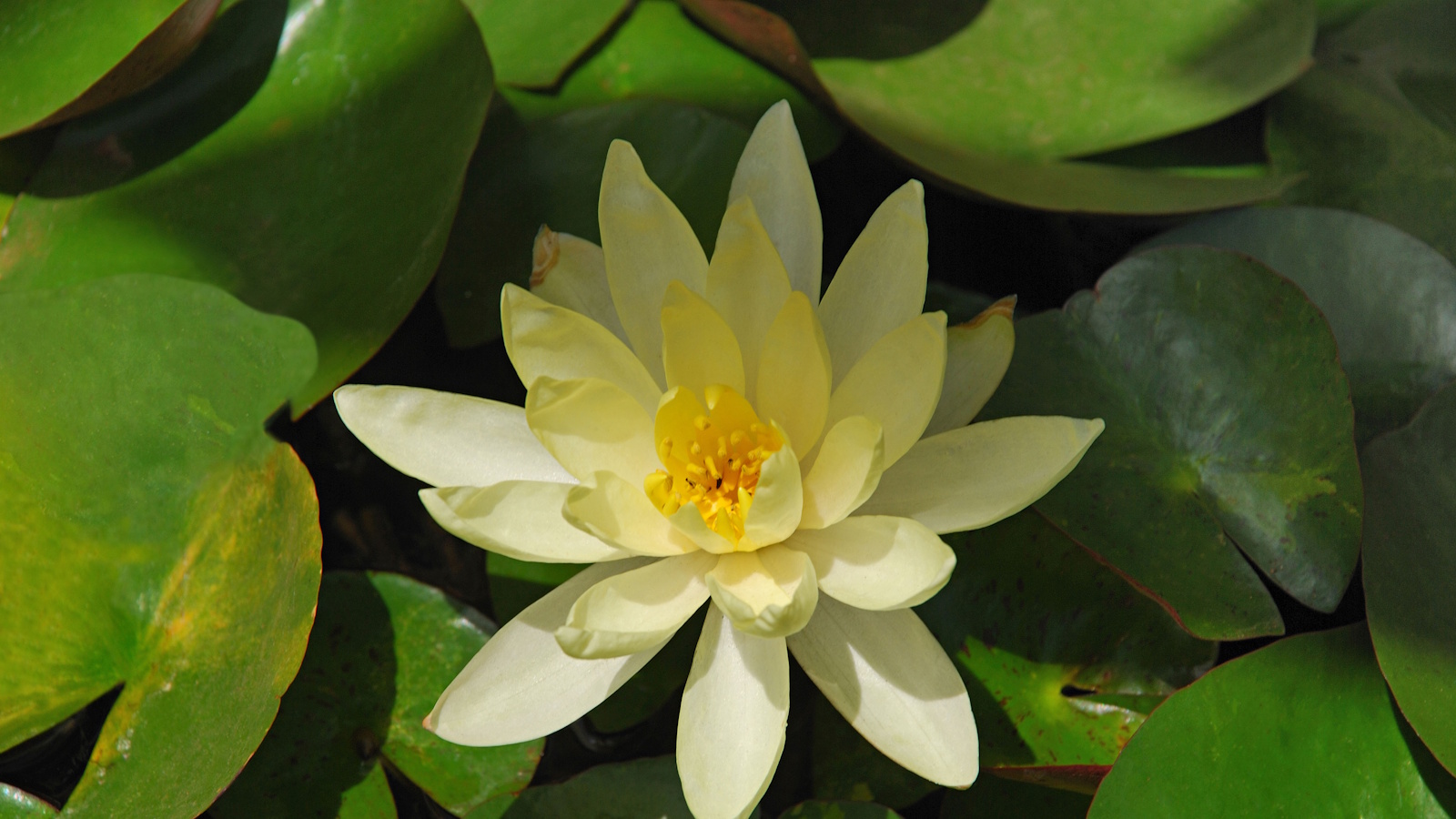
American lotus, or Nelumbo lutea, is an aquatic plant found growing in still to slow-moving freshwater habitats across much of eastern and central North America. With large pads and striking golden flowers, this hardy perennial plant is an excellent choice for backyard ponds.
Beyond just aesthetics, the American lotus is popular with pollinators and aquatic wildlife, adding shade and shelter for frogs while also providing nectar for local bees and butterflies. The large acorn-like seeds are also a nutritious snack for waterfowl, including ducks.
So, if you are looking for one of the best perennials to add to your wildlife pond this year, learning how to grow American lotus is a good idea. Here, one water garden expert from Texas reveals the secrets of this native aquatic species.
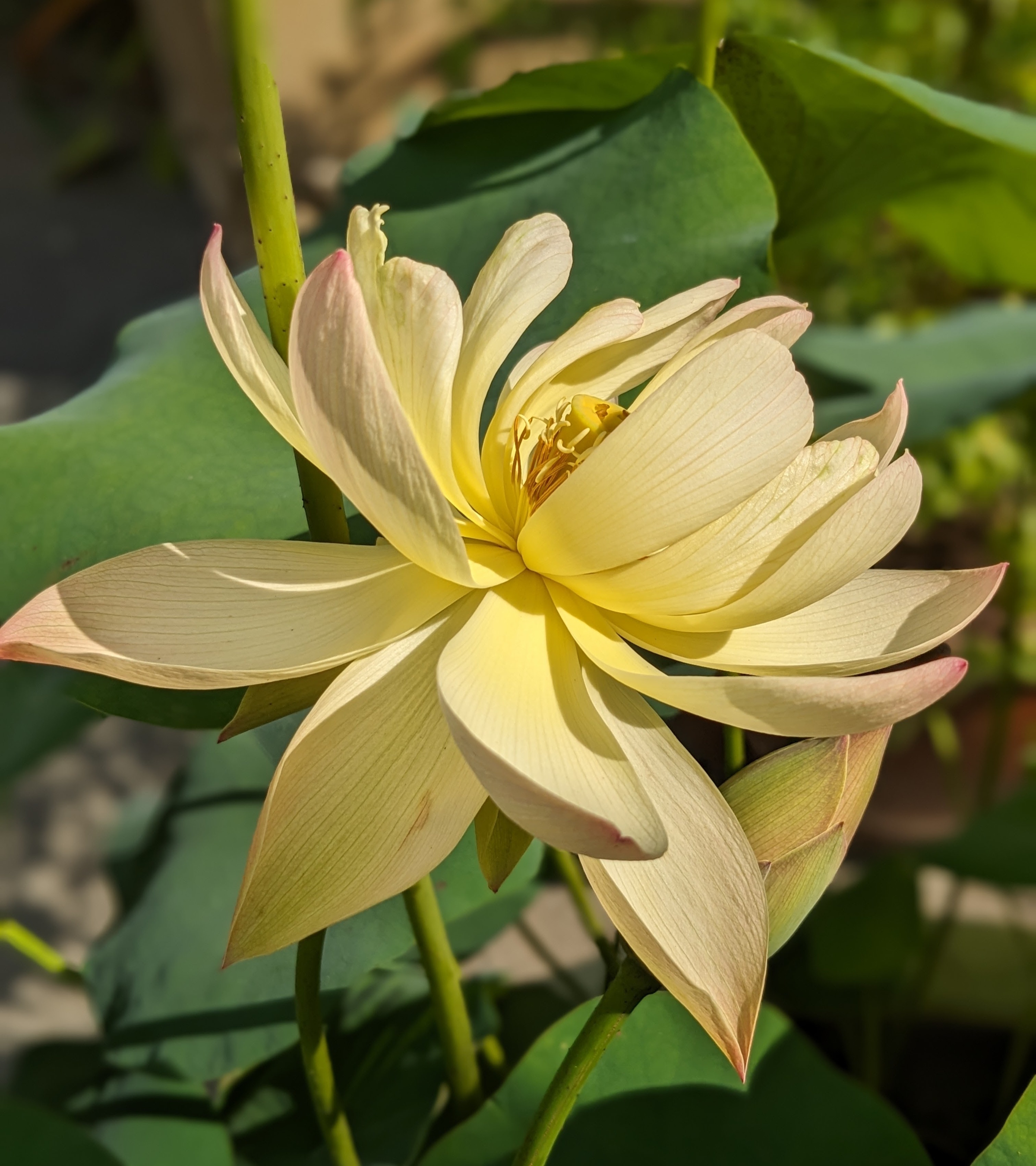
How to grow American lotus
American lotus plants are native to North America and often found in oxbow lakes, where the current slows. While this is a North American species, it can quickly spread, either by seed or rhizome, and regular maintenance is required to limit its growth. So, while Nelumbo lutea is considered one of the best pond plants, some annual maintenance is required to keep it in check.
Growing habits for American lotus
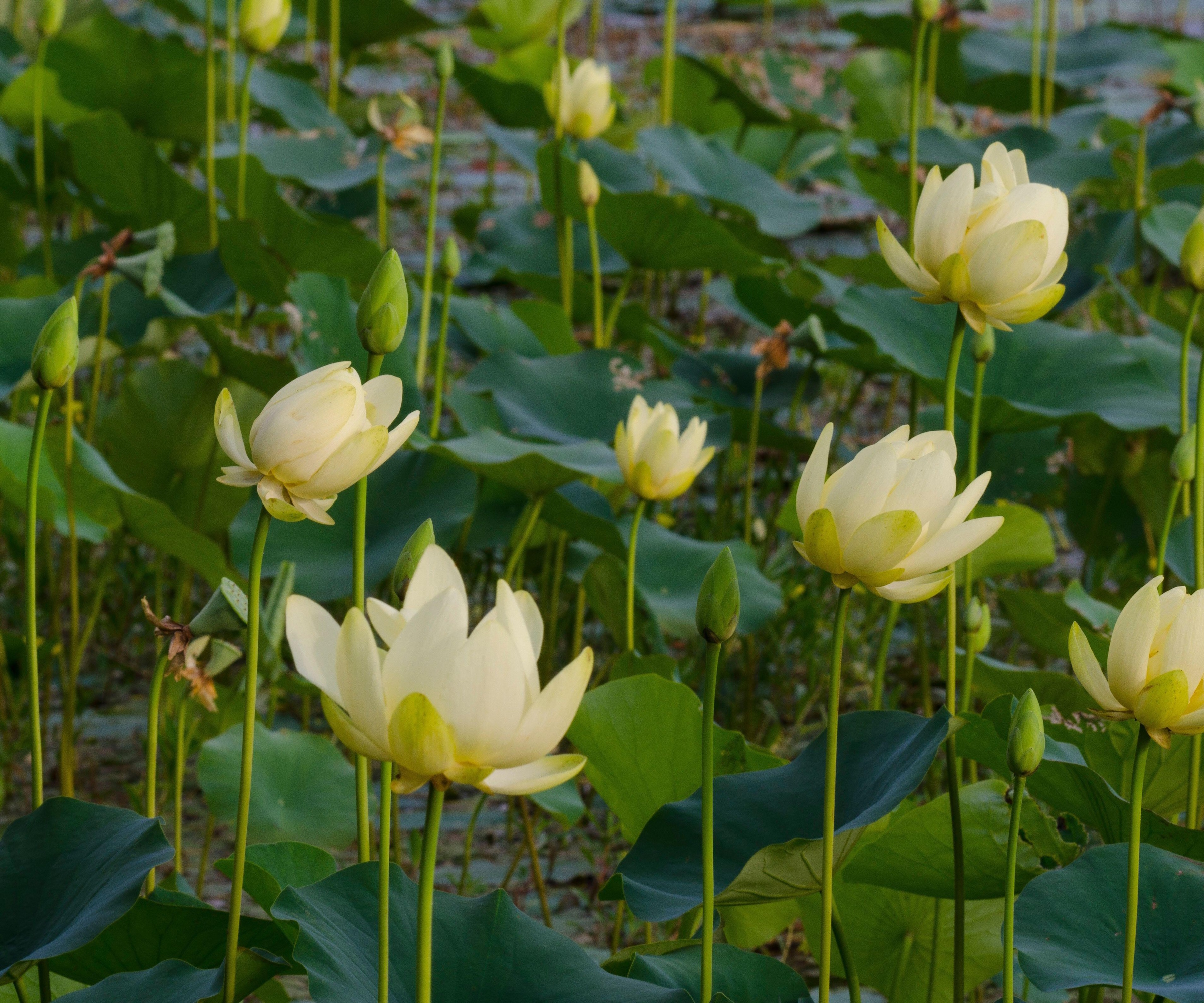
'American lotus plants are showstopping natives,' says John Peitsmeyer, water garden expert and current president of the Heart of Texas Water Garden and Pond Society. 'They have large flowers that open in pale yellow to creamy white, typically blooming in mid to late summer.'
While size will vary depending on conditions and situation, American lotus blooms can often grow to eight inches in diameter, looking particularly impressive when seen en masse in the wild.
These tall perennial flowers are classified as emergent, meaning that they are rooted in the water but have stems and leaves that extend above the water's surface. As can be seen in the images here, flower stems can be tall, and often reach up to three feet.
Design expertise in your inbox – from inspiring decorating ideas and beautiful celebrity homes to practical gardening advice and shopping round-ups.
'In terms of how to grow lotus, these plants thrive in shallow water, no more than two to four feet deep,' John adds. 'They require a full sun location wherever they are planted, but generally, they are pretty resilient in terms of climate, and can be grown from US hardiness zone 4 to zone 10, making them adaptable to many regions.
'While they can be invasive in certain areas, planting them in containers or ponds is fine with regular maintenance,' John says. 'Pruning the rhizomes on an annual basis will help keep them under control.'

John Peitsmeyer is a native Texan, Real Estate Inspection Company Owner and retired Professional Inspector. Serving as the current president of the Heart of Texas Water Garden and Pond Society from 2022 to 2025, John has a passion for water gardening. Living in China Spring, Texas, with his wife Susan, they enjoy caring for their chickens, ducks, and koi and goldfish ponds.
Care guide for American lotus
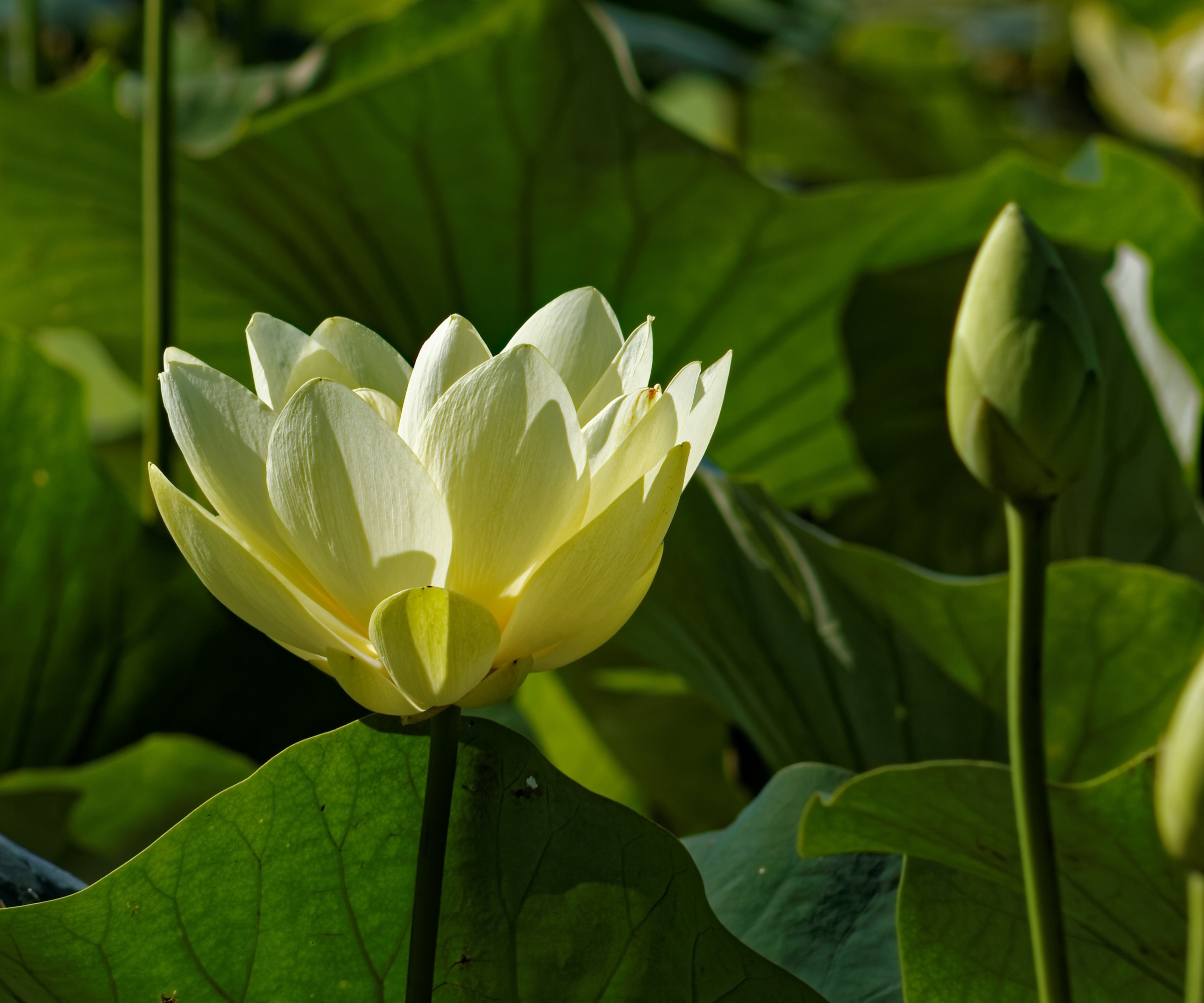
Soil: Rich and fertile soil is optimal for American lotus plants, ideally made up of silt or clay. If you have bought a young plant from a local nursery, it will typically arrive in a container filled with clay or aquatic soil, ready to be immediately submerged in your pond. If you are growing from seed, use a deep pond plant basket, available to order from Walmart, that is filled with nutritious clay soil to help the seedlings develop. In terms of pH, American lotus plants prefer acidic soil, so aim for a reading lower than 6.5.
Light: 'Full sun will generate the best results for American lotus plants,' John says. 'These native aquatic plants do best in bright and open spots with at least six hours of sunshine each day.' However, in equatorial regions, from zone 9 plus, afternoon shade is preferable to avoid leaf scorch.
Fertilizing: Like many pond plants, the American lotus is greedy. Feed in the spring and summer months with an aquatic fertilizer, using something like these pond plant tablets, available from Walmart. Fertilizer tablets can be pushed into the soil near the crown of the plant, doing so once every two to three weeks during the growing season.
Pruning: Prune American lotus plants in late winter, removing all wilted or yellow foliage and spent seed pods. Never cut stems below the water level, as roots and rhizomes use these stems to provide oxygen for the plant.
Toxicity: American lotus is not considered toxic to pets or humans. Many parts of the plant were once used by Native Americans who valued the young shoots and seedpods for their taste and nutrition.
FAQs
Is the American lotus considered invasive?
While the American lotus is native to eastern and central North America, in some regions it is considered dangerous due to its vigorous growing habit. For example, the Pennsylvania Department of Conservation and Natural Resources has classified the American lotus as an invasive plant to avoid. It is always best to contact a local nursery or consult the website of your local government office before introducing new plants to your yard.
How do I grow American lotus from seed?
American lotus seeds must be sanded or scratched to reveal some of the cream-colored inner layer. The lotus seeds can then be placed in shallow water in a bright position, like a windowsill. If temperatures are kept at 80°F (27 °C) or above, germination can take as little as five days. When the shoots are four inches or more, you can move them to a new shallow container with a mix of aquatic soil and water. American lotus seeds are available to order from Walmart.
As a vigorous perennial, it is necessary to lift, divide and thin American lotus every year. To do so, simply remove the plant from your pond or lift the container out of the water in early spring, and gently separate the roots into smaller sections. You can do this using a sharp knife or pruning saw, available from Amazon, but be sure that each new plant has a growing point with attached rhizomes and roots. Replant only a handful of the new plants to reduce the size.
For more pond plant inspiration, see our guide on how to grow waterlilies, and fill your water garden with dramatic flowers this year.

Thomas is a Content Editor within the Gardens Team at Homes and Gardens. He has worked as a professional gardener for both public spaces and private estates, specializing in productive gardening, growing food and flowers. Trained in Horticulture at the Garden Museum, he has written on gardening and garden history for various publications, including The English Garden, Gardens Illustrated, Hortus, The London Gardener and Bloom. He has co-authored a Lonely Planet travel book, The Tree Atlas, due out in 2024.
